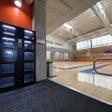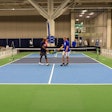Source: National Athletic Trainers' Association Dallas, November 11, 2013 - Anterior cruciate ligament (ACL) injuries are among the most devastating injuries a young athlete can sustain, given the frequent need for surgery and extensive rehabilitation as well as the potential for long-term health problems. A new study, "A Multi-Sport Epidemiologic Comparison of ACL Injuries in High School Athletics" is the first of its kind to examine ACL injuries among high school athletes by gender and across multiple sports. It is also the first large epidemiology study to focus on knee injuries among high school athletes in more than a decade. The study is in the November-December Journal of Athletic Training, NATA's scientific publication and is available at: http://natajournals.org/doi/pdf/10.4085/1062-6050-48.6.03. More than 7 million students participate in high school sports today. Although the benefits of physical activity are well documented, injuries can exact economic, emotional, physical and social tolls. The knee joint is the second most commonly injured joint after the ankle and the leading cause of sport-related surgeries. ACL injuries account for 50 percent or more of all knee injuries and an estimated $1 billion is spent annually on ACL reconstruction in this country. "ACL injuries are traditionally regarded as a female athlete issue yet this study found no significant gender difference in injury rates when all nine sports were considered," says Dawn Comstock, Associate Professor, Colorado School of Public Health, an author of the study. "The key message here is that targeted injury prevention programs should be focused on athletes participating in sports with the highest risk of ACL injury. For example, we found boys playing football were four times as likely to sustain ACL injury as boys playing other sports. Similarly, girls were four times as likely to sustain an injury in soccer and basketball compared to volleyball and softball." All high schools with one or more National Athletic Trainers' Association-affiliated athletic trainers (ATs) were invited to participate in the National High School Sports-Related Injury Surveillance Study using the High School RIOTM (Reporting Online Information) program. A random sample was used to select schools from each of eight geographic regions to achieve a nationally representative sample of 100 schools. ATs reported practice and competition data for nine sports during the 2007/2008-2011/2012 academic years. These consisted of five boys' (baseball, basketball, football, soccer and wrestling) and four girls' (basketball, soccer, softball and volleyball) sports. During the study, ATs reported 617 ACL injuries occurring in 9,452,180 athlete-exposures for an overall rate of 6.5 ACL injuries per 100,000 exposures. ACL injuries accounted for 20 percent of knee injuries and 3 percent of all injuries. Over 74 percent of ACL injuries resulted in surgery (287 surgeries for boys out of 388 ACL injuries reported; 172 for girls out of 229 reported). Nationally, an estimated 124,626 ACL injuries in boys and 91,002 in girls occurred in athletes participating in the nine sports during the study period. Competition accounted for 74.9 percent of ACL injuries and athletes were seven times more likely to sustain the injury in competition than in practice. The most common mechanism of injury was player to player contact, which occurs more frequently and is often more intense, in games than practices. Overall girls and boys had similar rates of ACL injury: the highest was for girls' soccer (12.2 ACL injuries per 100,000 exposures) followed by football (11.1). Boys' ACL injuries were sustained most frequently in playing football followed by soccer, basketball and wrestling. Girls were most often injured while playing soccer, followed by basketball, softball and volleyball. Of all ACL injuries, 87.6 percent were new while 2.1 percent were recurrence from a prior injury; 46.4 percent resulted in medical disqualification for the season while another 15.4 percent required a 3-week or longer recovery period before the athlete could return to activity. The study authors noted that coaches and ATs in sports with high rates of ACL injury should take special care to teach sport specific skills (e.g. planting and changing direction, jumping and landing); address neuromuscular strength, and work on coordination of stabilizing muscles about the knee joint through stretching, plyometrics and strength training drills. "Future studies should focus on the modifiable sport-specific risk factors for ACL injuries," adds Comstock. "This will help drive the development of effective, evidence-based and targeted ACL injury prevention programs." Until such programs are developed, the authors concluded that the incidence of injury should be expected to rise along with the increasing number of young athletes participating in sports. About NATA: National Athletic Trainers' Association (NATA) - Health Care for Life & SportAthletic trainers are health care professionals who specialize in the prevention, diagnosis, treatment and rehabilitation of injuries and sport-related illnesses. They prevent and treat chronic musculoskeletal injuries from sports, physical and occupational activity, and provide immediate care for acute injuries. Athletic trainers offer a continuum of care that is unparalleled in health care. The National Athletic Trainers' Association represents and supports 35,000 members of the athletic training profession. Visit www.nata.org.
New Study First of Its Kind to Focus on ACL Injuries in Mutliple HS Sports
Read Next
Recommended
More in Industry Press Room
Buyer's Guide
Information on more than 3,000 companies, sorted by category. Listings are updated daily.
Learn More
AB Show 2024 in New Orleans
AB Show is a solution-focused event for athletics, fitness, recreation and military professionals.
Nov. 19-22, 2024
Learn More





























